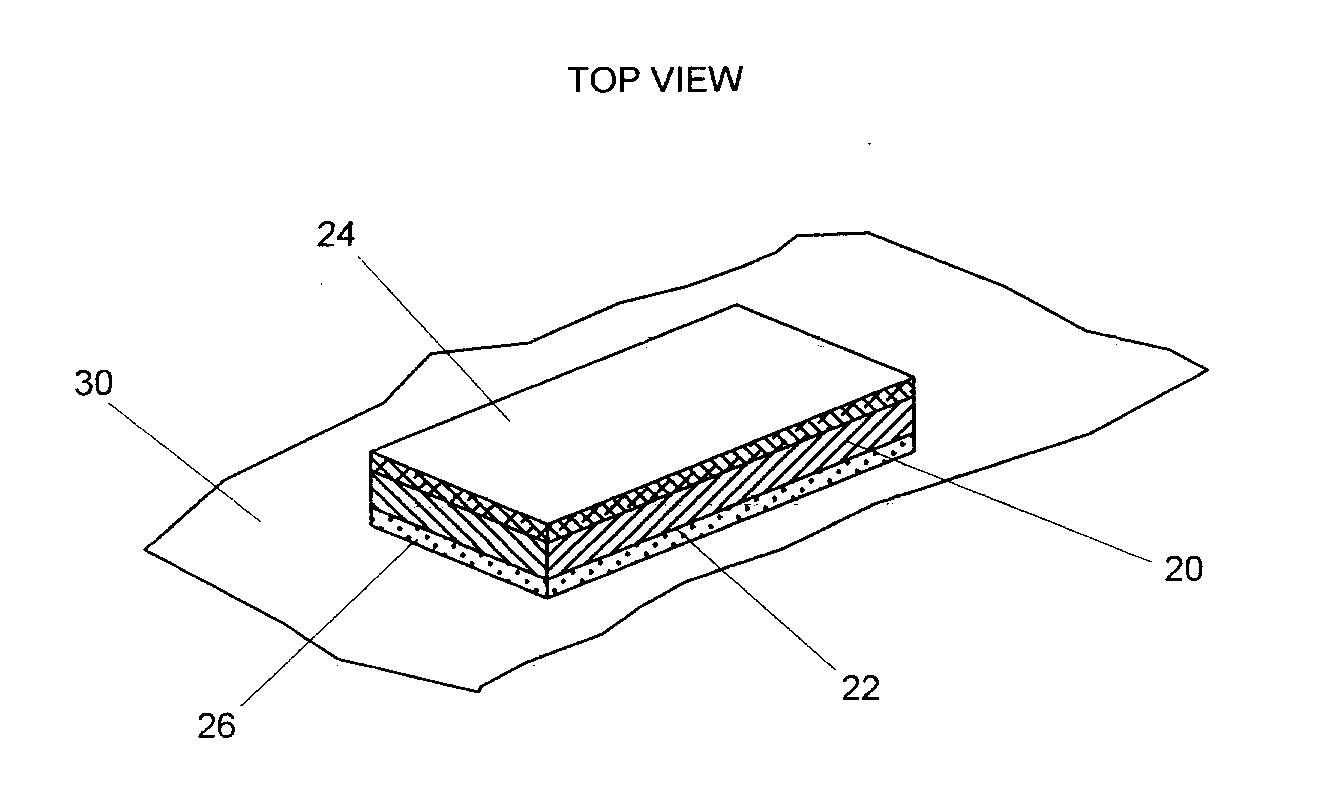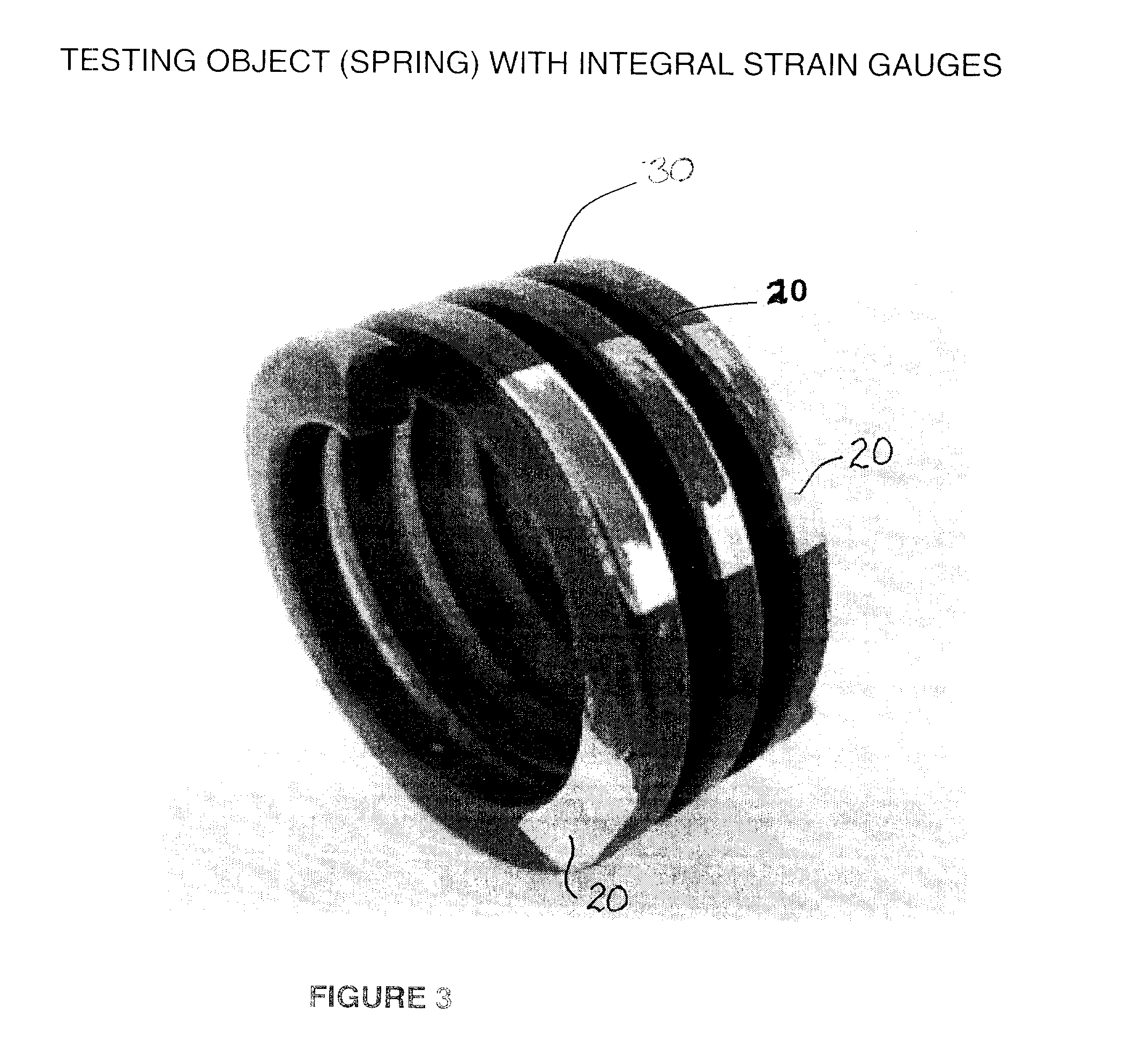Method of forecasting the lifetime of structural parts
a technology of structural parts and lifetime prediction, applied in the direction of material strength using repeated/pulse forces, instruments, material analysis, etc., can solve the problems of component failure, component wakening and eventually failing, and strain gauge on its own not useful in predicting the remaining life of the component,
- Summary
- Abstract
- Description
- Claims
- Application Information
AI Technical Summary
Problems solved by technology
Method used
Image
Examples
Embodiment Construction
[0049]According to the present invention, as illustrated in FIGS. 1-3, a gauge material 20 is selected which undergoes a progressive, cumulative and quantifiable change in at least one of its physical properties in response to repeated strain cycles applied thereto. The gauge should be of a form and dimensions to be attachable to a component or a part 30 being monitored. For example the strain gauge 20 illustrated is in the form of a strip having substrate 22 with a reflective coating 24 on one face and affixing means such as an adhesive 26 on its opposite face.
[0050]The reflective coating 24 diminishes in reflectivity as the strain gauge 20 is repeatedly stressed. The diminishment of reflectivity may be caused by microstructural changes of either or both the substrate and the reflective coating.
[0051]The reflective coating 24 may simply be an outer surface of the substrate 22. The strain gauge 20 may therefore be a metal foil strip of 10 to 15 μm thickness glued to or plated on the...
PUM
| Property | Measurement | Unit |
|---|---|---|
| thickness | aaaaa | aaaaa |
| cyclic stress fatigue | aaaaa | aaaaa |
| physical properties | aaaaa | aaaaa |
Abstract
Description
Claims
Application Information
 Login to View More
Login to View More - R&D
- Intellectual Property
- Life Sciences
- Materials
- Tech Scout
- Unparalleled Data Quality
- Higher Quality Content
- 60% Fewer Hallucinations
Browse by: Latest US Patents, China's latest patents, Technical Efficacy Thesaurus, Application Domain, Technology Topic, Popular Technical Reports.
© 2025 PatSnap. All rights reserved.Legal|Privacy policy|Modern Slavery Act Transparency Statement|Sitemap|About US| Contact US: help@patsnap.com



